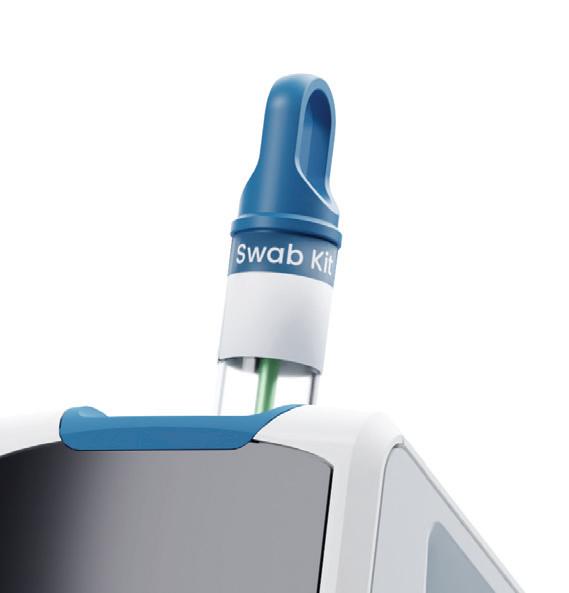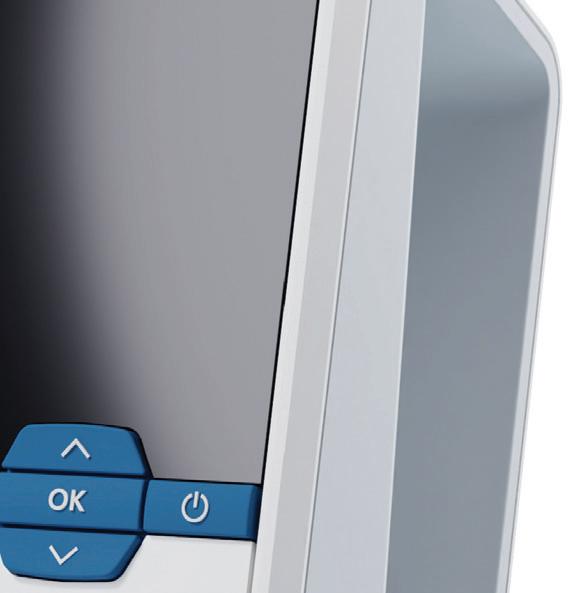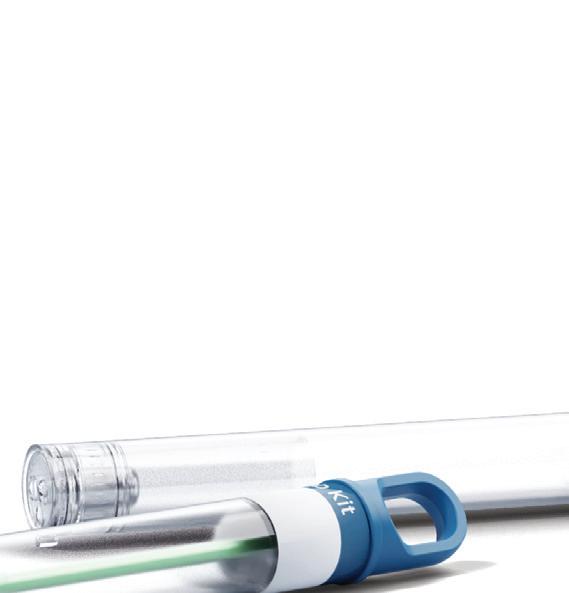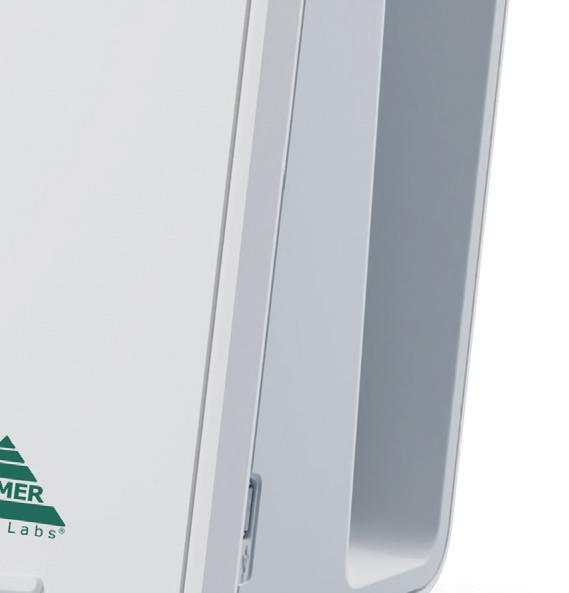
13 minute read
Enhancing service quality and reducing risks through operational monitoring of the water system: the Mid North Coast LHD experience
Jason Hinds Enware
The challenge to keep a busy working hospital operational and safe is becoming an everdemanding task. Water Quality Risk management (WQRM) has experienced heightened awareness, of recent times only exacerbating this challenge. Scald risks were one thing: now legionella. How are health care engineering teams expected to comply with the range of legislative reporting requirements while managing these risks with limited resources, tools, and support? This paper looks to present a biographical account of the challenges facing a regional local health district’s Asset and Facility Manager, appointed to ensure the hospitals under their management remain operational and safe for staff and patients. It looks to explain, from this operational perspective, the degree of liability to which the hospital is exposed due to a lack of compliant reporting, and how this burden and risk became the motivation to improve quality standards using technology and data driven evidence. It looks to provide a pragmatic explanation on how operational monitoring of the heated water systems can enhance customer experience, improve quality standards, optimize operations, and reduce management risks.
NSW Health have always had stringent legislation around water safety plans and the operational management of water quality risks such as scalding and legionnaires disease. The Requirements for the Provisions of Cold and Heated Water Policy Directive (1) sets out the legal requirements to be met by all hospital chief executives, owners, and operators in maintaining a safe environment for patients. This legal framework addresses requirements for the prevention of scalding and the control of systems that are likely to grow micro-organisms that are liable to cause Legionnaires’ disease. This policy directive outlines several key operational activities and reporting requirements that each facilities management team must ensure occurs regularly to mitigate safety issues concerning warm water systems and thermostatic mixing valves. Such activities include monthly safety temperature checks of warm water delivery, and temperature stability checks of thermostatic mixing valves, including diagnostic reports if any temperature variance is observed, followed by a maintenance report of all service interventions. Within the daily operational challenges associated with keeping a busy hospital running, all these required activities, which tend to get left to the hospitals under resourced engineering staff, can often be forgotten and missed, creating a compliance risk for all involved.
Adding to this risk is corporate governance legislation around water quality risk management which has seen heightened awareness since the introduction on Enhealth’s Guidelines for Legionella control in the operation and maintenance of water distribution systems in health and aged care facilities (2) which is driving the need to improve quality standards. First legislated in Queensland where amendments were made to the Public Health Act 2005 and the Public Health regulation 2018, these changes were all designed to improve water risk management practices in all public and private health care facilities.
As stated, (3), Regulated facilities are required to: • have a water risk management plan that addresses all water-related hazards which includes, but is not limited to,
monitoring for the presence of Legionella in water used by a facility • operate in accordance with their water risk management plan • demonstrate both timely and appropriate remedial responses are/have been undertaken in line with their water risk management plan in response to incidents including the detection of Legionella in water used by the facility.
Penalties apply for non-compliance of certain requirements, with this penalty framework reflecting the significant responsibility hospital and residential aged care facilities have for the proactive management and control of the health risks to their patients and clients.
Enhealth offers insights into how to best manage water quality risks through several suggested mechanisms. This includes proactive operational and verification monitoring programs such as regular water sampling, maintenance regimes to ensure temperature devices are working correctly, cleaning regimes to remove debris and biofilms from plumbing components, and system temperature monitoring and flushing interventions. However, these are guidelines only and each hospital needs to develop a Water Quality Risk Management (WQRM) team, define their risks, and create a risk management plan accordingly.
The legislation is pointing the finger at those governed to manage the hospitals from the top down to own this responsibility. Legislative compliance, as well as greater consumer choice and a widening disparity between best practice management across jurisdictions, all combine to elevate the risks and assist in driving quality change. However, there is little additional funding allocated to support these changes and quality improvements, leaving those tasked with implementing them at an operational level now under even more pressure and uncertainty, further increasing risk. For health engineering teams the challenge to keep a facility operating safely is an almost impossible mission made more challenging with limited tools, technology, and processes to assist. This challenge is heightened further for many regional health districts struggling with a range of other obstacles that exist due to their geographic location. For the MID north coast Local Health District (MNCLHD), the liable risks become so great that the Capital works and Asset Management team headed up by Stephen (John) Miles looked to technology as a solution to optimize their operations and improve quality standards.
The NSW Mid North Coast Local Health District (MNCLHD) provides health services to over 218 180 residents across a geographic area approximately 11,335 square kilometres midway along the NSW coast. They provide a range of public health services to that community through seven public hospitals and twelve community health centres extending from the Port Macquarie-Hastings local government area in the south up to the Coffs harbour Local government area in the north. The districts services include the Mid North Coast Cancer Institute and Mid North Coast Brain injury service. Their primary health care issues are associated with mental health and chronic age-related illness (4).
Being situated midway along the NSW coast has its benefits with a temperate climate and many beautiful beaches. From the perspective of the asset management and engineering team, it’s a fabulous area to live and work. However, the area is regional and with that comes inherent challenges. The tyranny of distance between sites extends operational tasks across days as opposed to hours, stretching their available workload. The health facilities within the group range in age and condition which results in operational inconsistency across sites. As stated by John; ‘there is a lack of general recourses and staff which can impact the quantity of the operational services provided and their ability to maintain minimum standards’.
For this small, under manned team, the drive and desire to maintain and improve their operational quality standards meant they needed to explore new ways to work and new technologies that could assist them. One area of their operational governance which was often overlooked was water quality risk management. As stated by John, “meeting NSW health regulations and now Enhealth guidelines is an ongoing challenge. Apart from having a lack of resources to do the job, there is also a lack of process and tools to assist so progressing to a minimum best practice is difficult
Image 1 – Mid North Coast Local Health District
to achieve’. There was an unsettling realisation that their record keeping was slipping and therefore the compliance to regulations was not being met.
In an interview with John Miles, he explained that “the Australian Health Facility Guidelines (AUSHG) increases the number of fixture outlets across the facility, and with shorter warm water dead legs required to reduce legionella risk, we have a higher density of thermostatic mixing valves to manage. These design requirement increases our operational workload which is already overloaded and hence increases

Image 2 – TMV Monitoring system typical installation. our scalding and stagnation risks. Our days were flooded with unplanned maintenance tasks and general operational duties which left little time for proactive or planned processes to help to improve the facilities operating performance. Necessary tasks like the flushing of unused taps were a resource challenge as too was collecting monthly temperature readings from all TMVs.”
“Our reporting was a problem area. The lack of time to document up reports on issues, whether it was water risk related, or anything, was of real concern. The quality of our reporting was limited, resulting in compliance drop off. Not only did it leave our team and organisation liable from a compliance perspective, but there was also little evidence to provide an audit reference that would allow monthly or annual performance reviews to identify areas of concern or opportunities to fix”.
It is widely known the only way to improve is to start measuring. Without good data or evidence, establishing a performance and quality baseline from which to improve is not possible. The inclusion of an operational monitoring system into the Port Macquarie upgrade provided the opportunity to start their quality standards improvement journey. Based off continuous monitoring of all thermostatic mixer’s temperature performance, it automatically enhanced NSW Health compliance reporting as well as provided evidence on operational issues in which to plan out possible improvement opportunities.
From a compliance reporting perspective, the system provides auditable accounts for monthly temperature readings for all TMVs, and traceability of any temperature performance

Graph1 – shows Monthly temp reading trends up to 100% compliance over 2 years, with sufficient flow reaching approx. 90% compliance.

issues, diagnostics and records maintenance interventions. Aligned directly to NSW Health legislation, the monitoring system automates this compliance process as well as aids identify TMVs that need to be run every month to ensure temperatures are captured accordingly. In direct alignment with EnHealth guides, the system also monitors fixture usage and will identify fixtures that have not registered sufficient daily water flow for a 7-day period and provide a list of fixtures requiring flushing. As opposed to informing cleaning staff to flush all taps and showers while they are cleaning patient bathrooms or operational programs like ‘Flushing Fridays’, the monitoring system narrows down and identifies only the individual fixtures needing to be flushed, saving approx. 7080% of staff time, water and energy.
Through continuous monitoring of the system over time, the engineering staff became aware of their most prominent stagnate fixtures and would proactively flush them when in the vicinity, further optimizing the management of the system. These reports assist staff to better know their site, as well as assist new employees to learn about the dynamics of the facility much faster. When operational interventions are planned, such as thermal flushing programs, John indicated that they used the system to record the events, providing traceability of their actions as well as verifying whether their sub-contractor plumbers are doing the job correctly. As the system continually records all temperature delivery events it can assist to ensure the patient experience is comfortable, particularly with respect to showering and bathing activities. John also stated, “It was also useful as a tool to retrospectively investigate unfounded legal claims from a past customer that they experienced a scald event while in the care of the hospital”.
Operational improvement commenced through observation and identification of system performance issues that occurred as the facilities operations were coming online. The operational monitoring system aligns with its Managed Services technical engagement was providing a monthly account of all over temperature alerts occurring across the site. Each of these events can be a result of the ongoing changes in the plumbing systems demand and the dynamic nature of its operation. However most importantly, these events highlight risks that impact the patient’s experiences which need further investigation, resulting in unplanned maintenance tasks.
Through the ongoing surveillance of the system and diagnostic support from the monitoring systems Managed Services team, water safety risk reporting was significantly elevated, ensuring a much higher level of compliance and service quality standard. Over time the continuous monitoring has allowed the engineering team to better identify problem fixture areas across the facility and proactively plan maintenance tasks to suit resource availability. This has allowed the engineering services team to optimize their time through reduced demand for reactive service tasks which has seen an approx. 75% reduction in unplanned maintenance.
The MNCLHD has expressed the intention to expand the Smart Flow fleet to ultimately encompass all the LHDs facilities under the one system, based on the clear benefits gained from the SFS service.
The improvement of the performance of the TMV fleet can been seen in graph (2) which shows the reduction in the number of TMVs registering alert events over time, and the number of alert events registered by individual TMVs, indicating improved fleet performance as well as compliance outcomes.
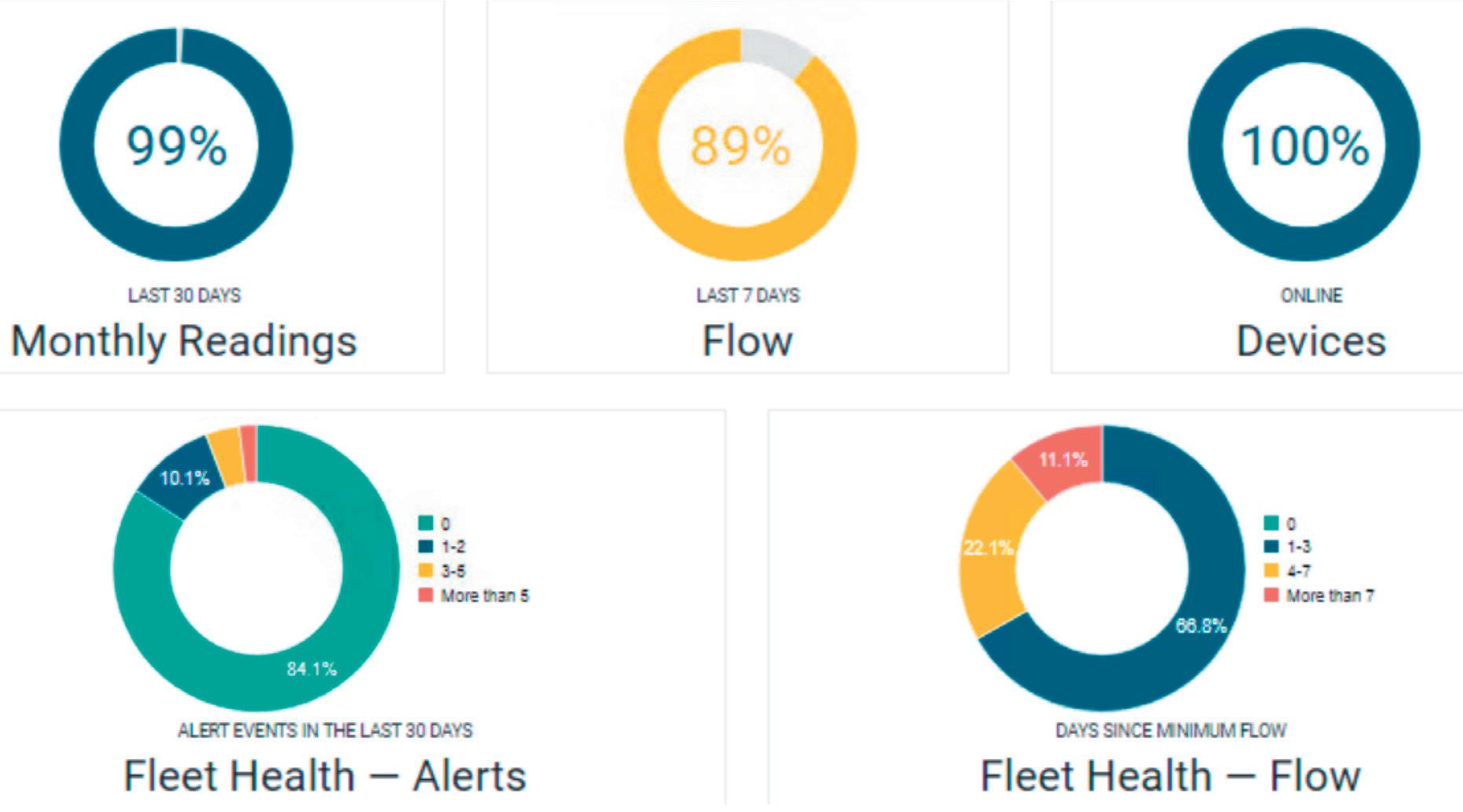
After initially installing their first operational system into Port Macquarie Hospital back in 2014 and signing onto a managed service agreement for that site in 2016, MNCLHD have now had the operational monitoring system installed into their newly development Kempsey Hospital and concluded that the benefits of the system’s Managed Services technical support in both time efficiency for their staff and better compliance outcomes for their operations were such that they signed a full service agreement for both Port Macquarie and Kempsey Hospitals. By 2019, their new Hospital at Macksville had their fleet of thermostatic mixing valves monitored and were also added to the service.
The TMV fleets for each of these are: Port Macquarie Hospital 208 TMVs Kempsey Hospital 111 TMVs Macksville Hospital 111 TMVs
Total 430 TMVs
During the last four years the Operational monitoring managed service has continually monitored and reported on each of these fleets as the total number of monitored TMVs has grown. It is available in a hard-wired configuration to align with new renovations as they occur or offered wirelessly, enabling all existing assets to now be included in the system across the whole local health district. This provides greater opportunity to benchmark facility performance and reduce risks through consistency in operation. At a time when the asset teams were struggling to maintain a basic level of reporting and compliance, they now have an auditable data base of all operational activities captured for their entire thermostatic mixer fleet across 3 sites. This has proven to not only reduce the scald and legionella risks for their patient customers but reduced their legal compliance risk while providing the catalyst to enhance the quality standards of their service.
References
1. NSW Health Policy Directive – Water: Requirements for the provisions of cold and heated water. 2015. Water – Requirements for the Provision of Cold and Heated Water (nsw.gov.au) 2. Enhealth.Guidlines for Legionella Control in the operation and maintenance of water distribution systems in health and aged care. 2015 Guidelines-Legionella-control.pdf (health.gov.au) www. mnclhd.health.nsw.gov.au/about/ 3. Queensland Health. Legislation for water risk management in healthcare and aged care facilities. 2017. Legislation for water risk management in healthcare and aged care facilities | Queensland
Health. 4. Mid North Coast Local Health District. About - Our District.
About us - Mid North Coast Local Health District (nsw.gov.au)
Don’t Settle for Less

Manufactured in Australia, the Room Air Purifier (RAP) provides clean, fresh air to immediately improve indoor air quality, particularly in high-density commercial areas. The RAP is designed to continuously cycle air through a HEPA filter and MERV 8 pre-filter to eliminate >99.97% of dust particles, germs, and contaminants.
LEARN ABOUT THE RAP AT WWW.HOLYOAKEPUREAIR.COM OR CALL 1300 456 962



